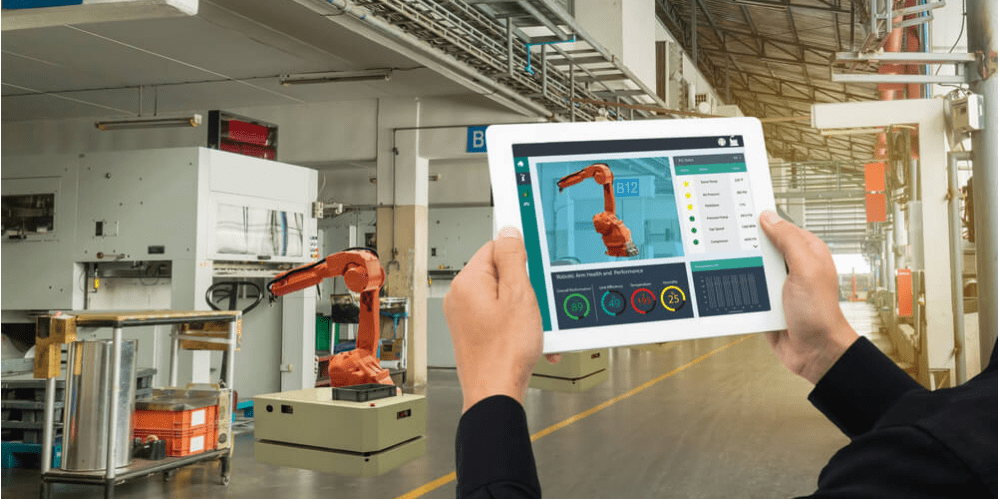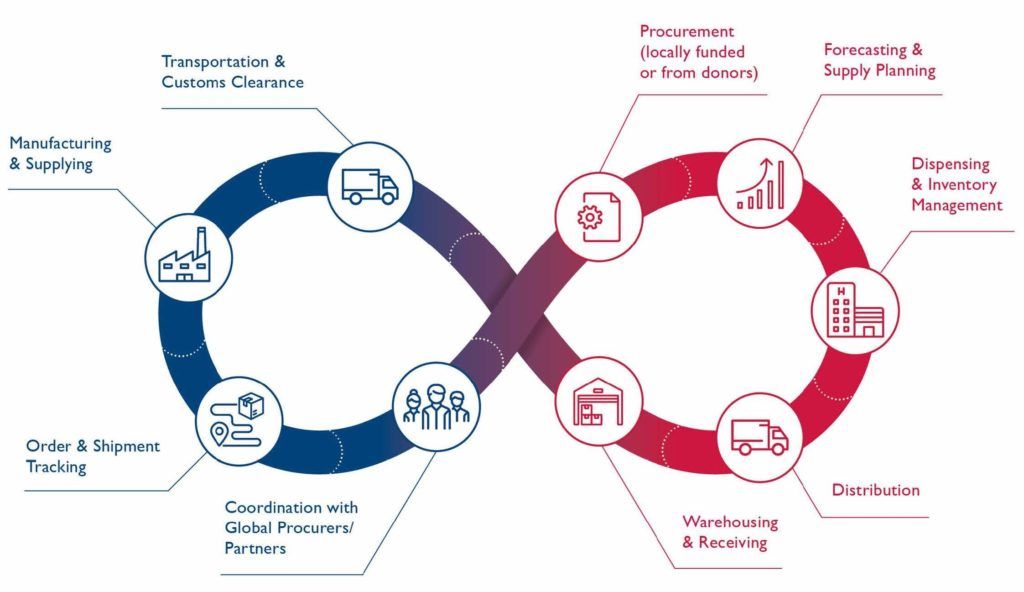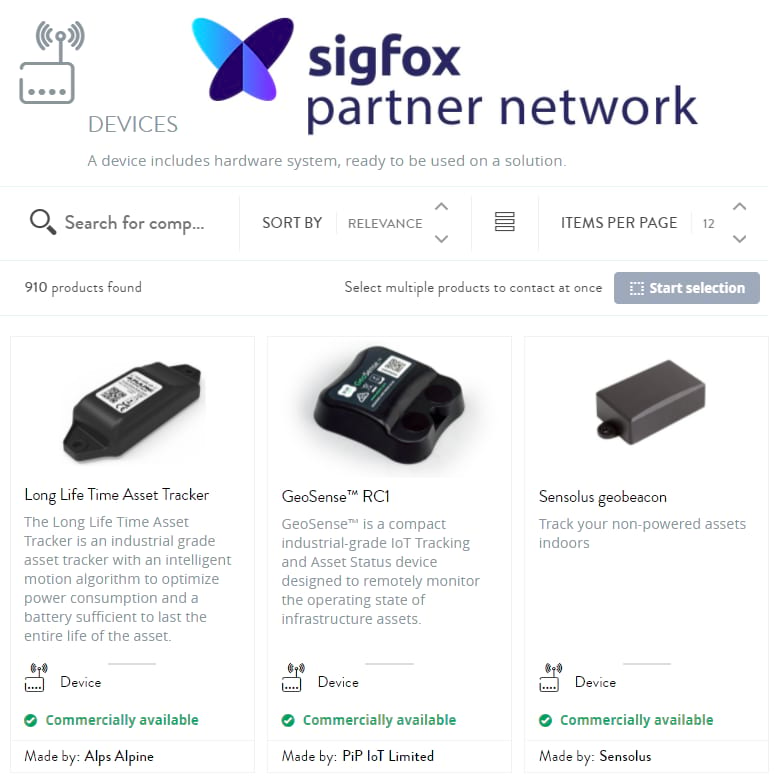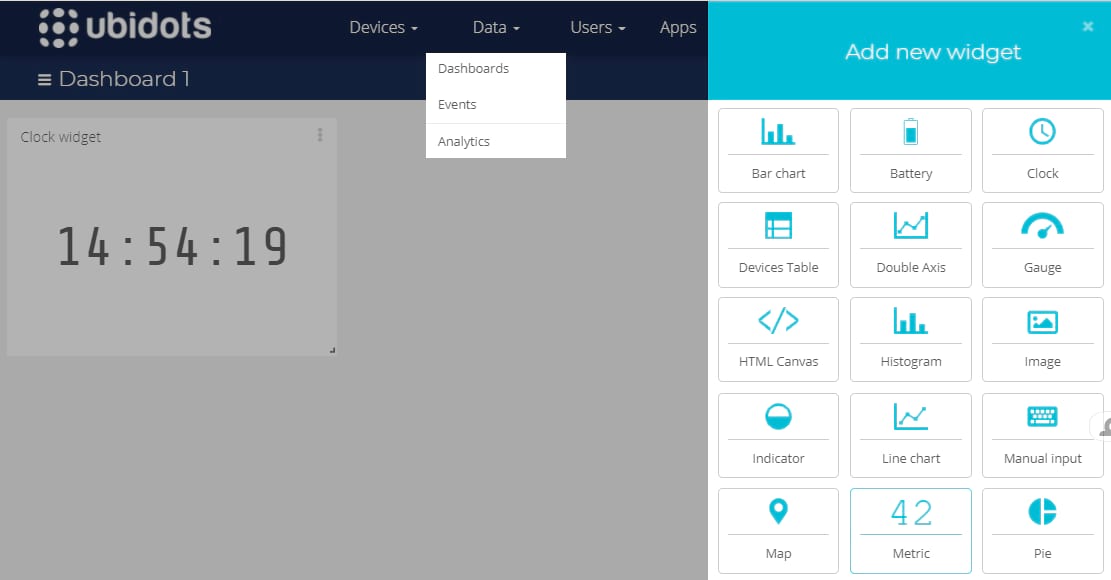Supply Chain Management: How IoT Is Boosting The Practice
Here's how IoT is rapidly changing supply chain management, reducing operational overheads + significantly boosting efficiency and compliance.

"IoT" in supply chain management refers to connecting various data points (devices used as part of the supply chain) to achieve a final outcome such as higher operational efficiency or better forecasting of product demand. It is a growing practice even for small businesses.
Tracking goods more effectively across the supply chain is the reason why IoT connectivity is gaining so much ground in this important business practice.
» FREE TRIAL: Launch Your IoT Application To Market in Less Than 30 Days with Ubidots Drag-n-Drop IoT Dashboards
Although beneficial to huge companies trading goods globally, an IoT-powered supply chain is also helpful for smaller businesses with less resources.
Going from supplying the raw materials to manufacturing a product all the way down to selling at retail is a treacherous path.
IoT promises to make that path more transparent.
What Is an "IoT" Supply Chain?
The official definition of supply chain is the following (Wikipedia):
A supply chain is a system of organizations, people, activities, information, and resources involved in supplying a product or service to a consumer.
With the Internet of Things, that definition is slightly modified to include devices deriving additional information on their own rather than manually.
So, an IoT supply chain is a system that employs device connectivity to achieve the same final outcomes of supplying a product to a consumer but more efficiently.
Why Integrate IoT Connectivity in a Supply Chain?
Supply chains are traditionally designed to combine human labor with the efficiency and precision of machines, achieving production at scale.
With IoT, a lot of the automations introduced in factories across the world can now be monitored more accurately and with real-time alerts when something fails.
At a smaller scale, entrepreneurs benefit from a more dynamic manufacturing environment depending on how they bring IoT devices together.
Both parties stand to benefit, and in both cases there is room to grow.
Other valuable additions include streamlined paperwork management and more accurate demand forecasting.
IoT Supply Chain: 2 Things To Know About
Finding ways to streamline Supply Chain Management (SCM) practices is already becoming big business, as most companies are looking to migrate to more environmentally-conscious manufacturing of their products.
That's where IoT helps balance some of the costs.
The key to understanding IoT in the supply chain is to look at the bigger picture rather than the individual sensors and devices that require installation.
The value is in the information.
1. It's Mostly About Gathering & Storing Information
While certain automations can be achieved through the use of IoT devices, the idea behind installing them in a supply chain is to gather the data necessary to achieve a less strenuous path from order made to a supplier, all the way to consumer.

That information comes in the form of:
- Historical logs
- Real-time alerts
- Proxy metrics (used to derive other metrics)
- Computed metrics (derived metrics)
Using an IoT dashboard like Ubidots, all of this information comes together to paint a wider picture of what companies would achieve using statistical models.
It's one thing to look at manually-recorded historical data and try to derive sense; it's another to let a machine derive what will happen in a year's time predictively.
The latter is what companies want to achieve using IoT devices in the supply chain because it helps with forecasting demand effectively so there is no waste in raw materials ordered and products that sit on the shelves far too long.
2. It Should Be Designed & Personalized To Each Use Case
Although it's tempting to look around and shop for a "solution to your problem" supply chain provider, there's no one-size-fits-all implementation to this problem.
However, there are systems and platforms that allow you to build on top of a solid foundation. Some examples of these are:
- Industrial IoT Sensors (ex: NCD.io)
- Industrial IoT Gateways (ex: RedLion)
- Application enablement platforms (ex: Ubidots)

Employing a third-party provider like The Things Industries can significantly reduce the time it takes to deploy your solution. However, what you want to achieve specifically (e.g., temperature monitoring, real-time alerts, GPS tracking) is up to your supply chain and what you see as valuable.
How To Collect Data Throughout the Supply Chain
If you want to invest in a supply chain that's powered by the Internet of Things, you need to invest in small, highly-efficient devices that are proven to provide stable connectivity and that can connect to a dashboard like Ubidots.

On top of that, you need the talent of someone in your team who can program the devices effectively and make them run smoothly throughout their entire lifetime.
For that, you will need a device management strategy, which you can learn more about in our previous post.
You will also want to collaborate with your partners such as suppliers and logistics companies to install these devices throughout the supply chain.
IoT Supply Chain: The Manufacturing Process
For the manufacturing process itself, you retain full control over what happens in your factory, coming as a big advantage but also as a big responsibility to use IoT in your favor. Ask yourself these questions before investing further:
- What parts of the manufacturing process are most prone to breaking down?
- Where have you seen major bottlenecks happen in the past?
- Is your manufacturing process established or evolving?
- What can be clearly improved in the current process?
Based on the answers and on a weighted methodology, you can make the decision of where to invest first that will yield more value down the line.
Starting with one sensor at a time, you can have your manufacturing process fully mapped out in a matter of months.
Visualize Your Supply Chain with an IoT Dashboard

A supply chain is an intricate system that is undeniably hard to grasp, much less visualize in its full complexity.
That's where IoT dashboards like the ones from Ubidots come into play.
To derive metrics related to your machinery, or to track assets being shipped to retailers, it's important to send all of the information you gather to one unified interface. With Ubidots' platform, you can build an application on top of your existing supply chain and device management strategy.
That way, you will never miss a beat on any of your assets.
Try it free and start adding your first devices today »
Frequently Asked Questions
How is IoT changing the supply chain?
IoT is helping companies gather and derive more accurate information quicker and without the need for human input through the use of low-power devices like internet-connected sensors.
Why is IoT important in the supply chain?
A company's supply chain stands to benefit from IoT innovations because they allow to automate certain actions while preventing major incidents before they happen, and predicting consumer demand 6 to 12 months into the future without using traditional statistical models.
What are some use cases for IoT in the supply chain?
Some of the more common use cases for IoT supply chains are: 1) real-time alerts based on temperature, tilt, humidity, or other metrics; 2) automated data gathering for compliance checks during the manufacturing process, and; 3) tracking goods throughout the entire supply chain.
How is IoT used in logistics?
In logistics and transportation, small devices connected to the internet are individually-placed on assets to be tracked in real-time. This helps with preventing loss while decreasing delays.
